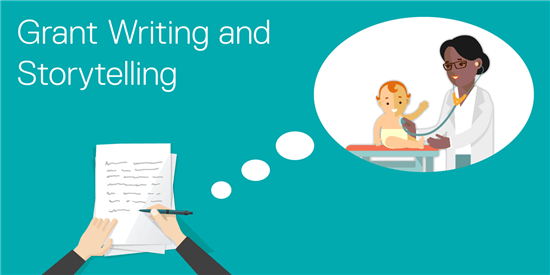
I grew up on a farm in Minnesota. My mother was from the area, but my father was from Missouri. I don't know how much you know about Missouri, but I bet you know this: Missouri is the Show Me State.
My father, however, was the "tell me" father. Never an evening meal went by that we weren't all encouraged to tell what happened with our day.
It was a bit of a competition to see which one of us kids could turn our day into a hilarious adventure. Evening meals sometimes went on for hours as we continued our storytelling.
We are surrounded by stories: our own story, the stories of our families and friends, and the stories of the work we do every day. These stories simply exist in our minds until we add language and share them with others. And, as we all know, a story you share with others has the power to change the world.
Consider this story, which has changed state laws throughout the U.S.:
After her 13-year-old daughter was killed by a repeat drunk driver, Candy Lightner founded Mothers Against Drunk Driving (MADD) in her home on March 7, 1980. Before MADD, there were little to no legal consequences for driving while intoxicated; her organization transformed American attitudes about drunk driving and successfully fought for stricter laws across the country.
Start Your Grant Proposal with a Story
So, why would we not want to use this powerful communication tool when writing grant proposals? When I began writing proposals, storytelling was the only way I knew to convey the problems my organization faced and what we were doing to overcome those problems. I figured that if I told a good story, the funder would be willing to invest in our work. It never occurred to me that there was any other way to write a grant request.
Of course, over time, I realized the importance of documenting the problem or need, including strong objectives, a solid plan of action, and a budget that reflected the work we intended to do. But storytelling still plays a prominent role in all requests that I write.
For decades, I have preached the importance of drawing the reader into your grant request by opening with a story. Often this idea confuses grant writers because they know they have limited space to make their case, so why waste it on storytelling?
Telling a story doesn't have to take pages and pages of text. It can be something as simple as an opening like this (this is fiction, by the way!):
In rural Boone County, West Virginia, Jennifer Massey bathes her children in contaminated water. It's either that or not bathe them at all. The well water in the remote mountain community of Prescott where she lives contains elevated levels of lead, arsenic, and manganese. Her options for clean water are limited. So, she does the best she can with the resources she can find and afford.
A short vignette, such as this, will grab the reviewers' attention and encourage them to learn more about the issue. The key here is to keep it short, spotlighting the problem or issue you are trying to resolve.
Some Winning Stories
Every year, GrantStation runs a contest to uncover some of the best proposals that have been written. GrantStation then publishes these winning proposals on its website so other grant writers can refer to them as they write their own proposals.
The entries are judged by a panel provided via the Grant Professionals Association. One of our winners from several years ago, who writes for a home for the elderly, submitted a stellar proposal that combined statistics and a story. She opened with statistics:
Elder abuse is prevalent in (name of state). According to a 2013 study by The National Center on Elder Abuse — considered the most comprehensive, reliable study of its kind — (name of state) has more abuse cases reported to Adult Protective Services than any other state surveyed in the nation. Our state reports 24.5 cases of elder abuse per 1,000 seniors. The median across the states was 5.7 of 1,000.
And then she quickly followed this set of statistics with a story:
Anna's Story
Anna had been attending an adult day center for about a year, while living in her niece's home. Over the past few months, staff had been worried about the elderly woman as she would sometimes show up with suspicious bruises on her body. Despite inquiries, staff walked a delicate balance of attributing the marks to accidents and suspecting Anna's niece of abusing her aunt. The balance shifted when Anna arrived one morning with a bloody, broken nose and a painful looking bruise on her head …
This is a very tight and well thought-out opening. It is a clever use of statistics combined with a story. This opening immediately draws the reader into the situation, not only making them want to learn more, but also making them eager to help solve the problem.
Create Stories from Events
But what if you don't have a stirring story like Anna's to engage the reader?
Sometimes you can create a story by tapping into documented events. For example, you could use a series of headlines from the local news such as this (again, fictional):
- June 9, 2017 — The Daily News: Shelter Takes in 87 Abandoned Dogs
- July 7, 2017 — The Daily News: Good Samaritans Aid Skeletal, Abused Dog
- August 4, 2017 — WNGY Public Radio: More than 30 German Shepherds Found Abandoned in Highland
- August 11, 2017 — The Daily News: Uncontrolled Dogs Are Creating Chaos in Our Community (Editorial)
- August 27, 2017 — WNGY Public Radio: Are Free Spay and Neuter Clinics the Answer?
Obviously, this isn't a story, per se, but it tells a story, doesn't it?
Being a little creative when trying to find a way to engage the reader sometimes pushes you into using quotes from testimonials or headlines in newspapers. You could even tap into a series of agenda items from your town council meetings.
Engage the Reader
However you approach grant writing, always consider the merits of including a story to move the reader from "interested" to "engaged." I believe storytelling is one of the very best ways to capture people's attention, demonstrating the motivating, human dimensions of the problem you are facing.
And besides, storytelling is fun!
TechSoup's Storymakers Challenge
In 2017, TechSoup put on Storymakers, a digital storytelling challenge, which this post accompanied. See resources that can help you become a storymaker.






